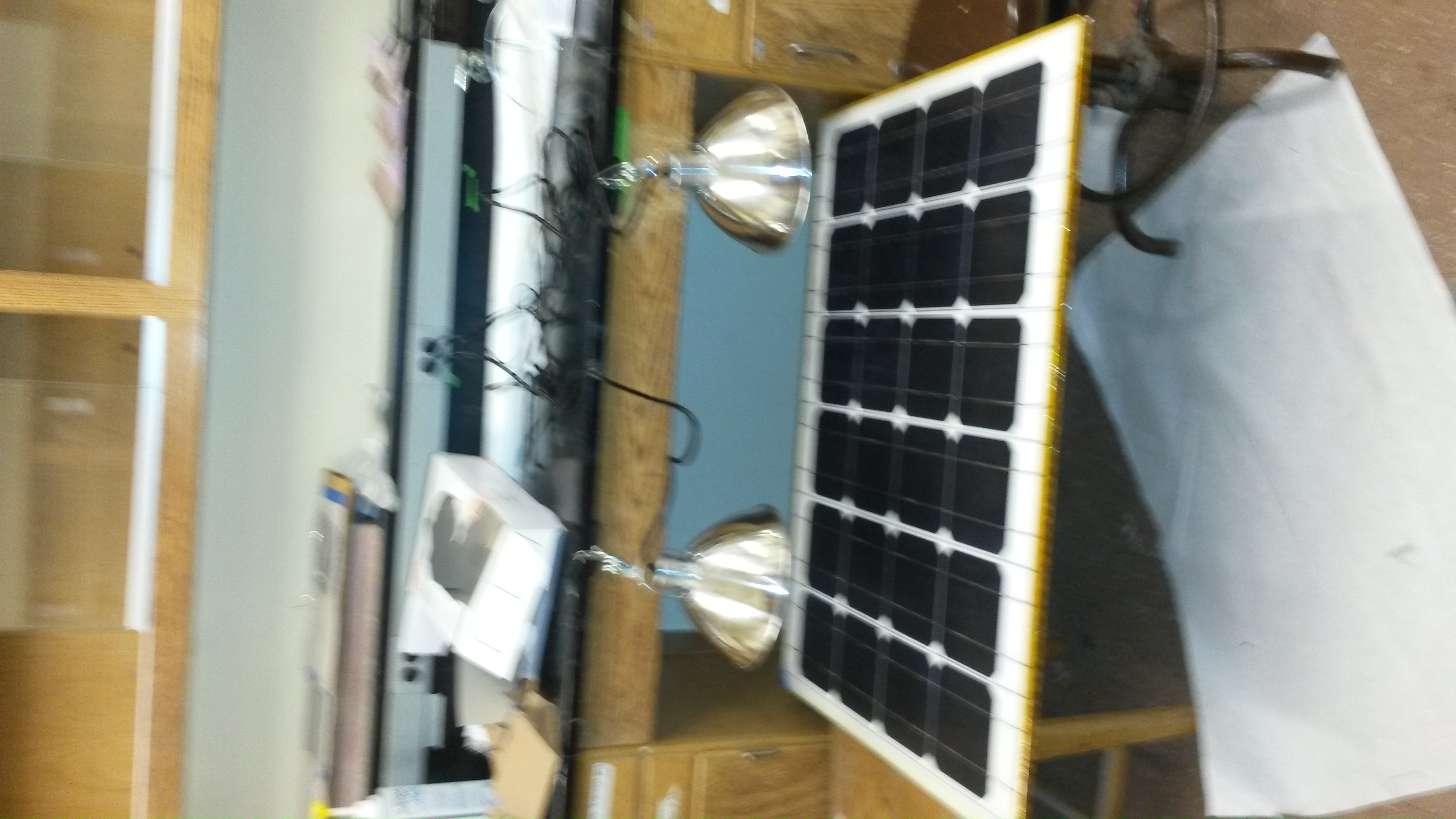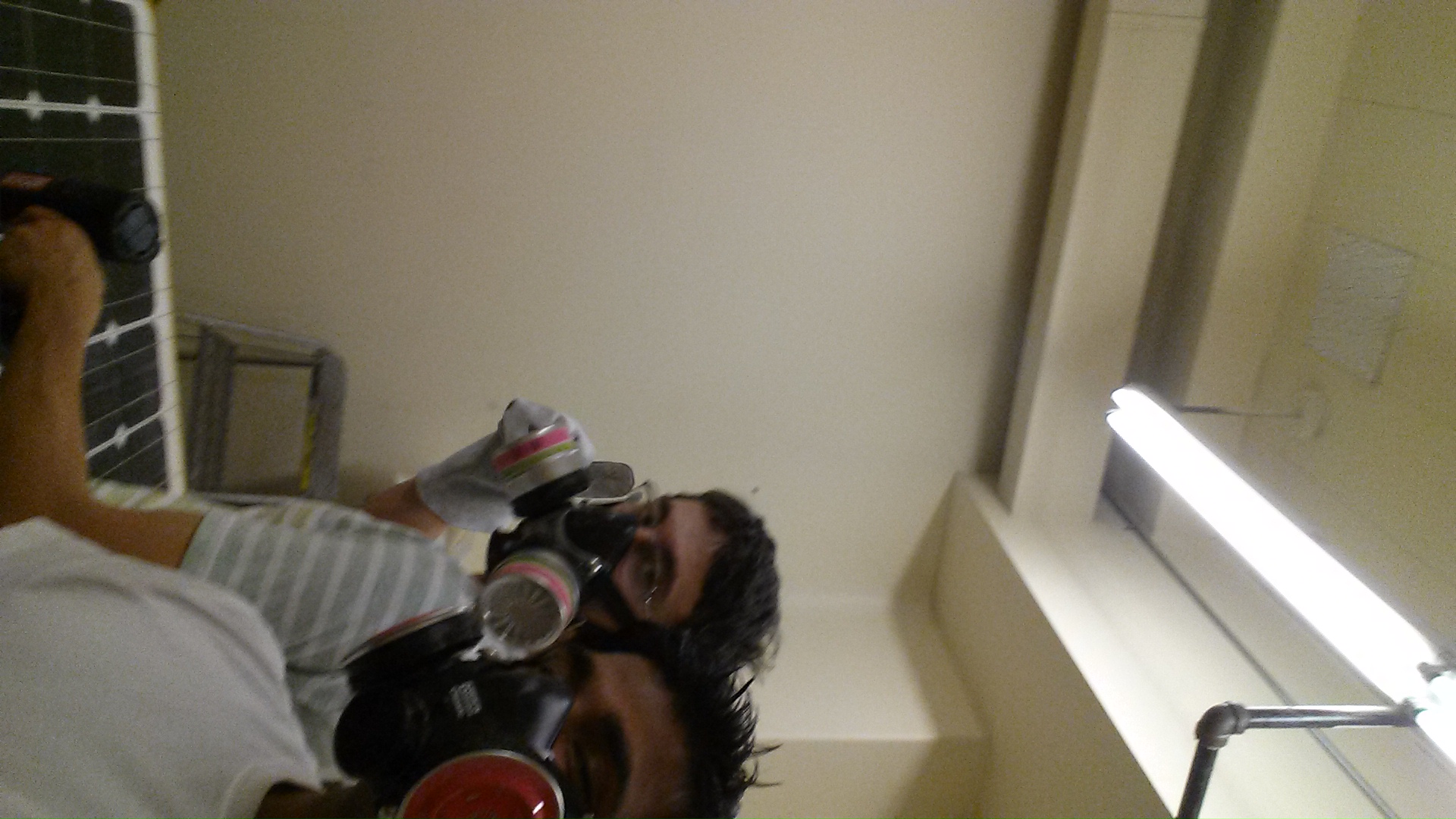108 W Solar Panels
Collaborators: Eli Abidor and Chris Hickey
Project Dates: 1/5/2014 - 6/10/2014
Summary:
Designed, manufactured and assembled an array of five 132W solar panels for the Northeastern Solar Boat Club. This was done over purchasing commercial panels to optimize for weight and to maximize power delivered to the boat throttle through a maximum power point tracker (MPPT).
Material Selection:
Aluminum honeycomb was chosen for the panel backing due to its light weight and high compression resistance. Compression resistance was sought after to make the panels easier to transport and protect. Tedlar was used as an anti-weathering material and placed under the solar cells to prevent the aluminum from staining. The cells were then sealed to the honeycomb by an EVA encapsulation layer that runs around the edges of the panel. Finally FEP, a corrosion resistant plastic, was wrapped around the panel to protect from debris and allow for easy cleaning. The FEP was used in lieu of glass, typically found on traditional commercial panels, to significantly cut down on weight.
Assembly:
The solar cells are extremely brittle and so equipment had to be designed to reduce human error during assembly, however this had to be done affordably. A rack was made out of sanded plywood to the length of a string of our solar cells, with small walls placed to align each individual cell with the rest of the string. These walls had small notches cut to run solder tabbing between the cells allowing for us to solder the cells in place with minimal error and helped ensure that each panel fabricated would have near identical dimensions and make.
Due to a lack of available resources to cure the EVA in an airtight vacuum, a makeshift assembly had to be designed to prevent air pockets from forming on the panel during the curing process. A hole was drilled in the bottom of a table the panels were to be assembled on. A shop vacuum was attached to this hole and air gaps between the top of the table and the panels were sealed with Capton tape. Capton has a high melting melting point and had a low risk of melting during the curing process. The vacuum created a near airtight seal between the EVA and the aluminum backing. Makeshift heat guns (we had 1 heat gun and removed safety fuses from commercial hair dryers to draw a higher amperage and provide sufficient heat) to evenly cure the EVA and encapsulate the panels.
Electrical Design:
During panel fabrication, the strings of cells were arranged so that the voltage of each panel is slightly higher (about 12.4V) than the boat’s batteries to allow for the highest rate of charge while matched to a 12V system. This would accommodate a future setup where the boat is powered by 12V batteries in parallel for a long distance race event, where a higher speed is less desired than greater overall power. However the motors selected for the current design only operate at voltages greater than 36V, to accommodate for this the panels are joined together by a series of modular switches so they can be set up in different combinations of 12V multiples to still allow for matching with this and other potential higher voltage setup. 12V increments were chosen due to the commercial standards of batteries as well as of available Maximum Power Point Trackers (MPPTs) on the market. The MPPT actively handles fluctuations in panel voltage to provide a steady current to charge the batteries and maximize the power output of the panels.
To prevent hot spot formation on the panels caused by shading 5A bypass diodes were added to each string of cells, additionally blocking diodes were added to the assembly to allow for the panels to remain out at night without draining charge from the batteries.

Our sun lamp test setup to determine the efficiency of the panels

Eli Abidor and I curing the EVA encapsulant.

